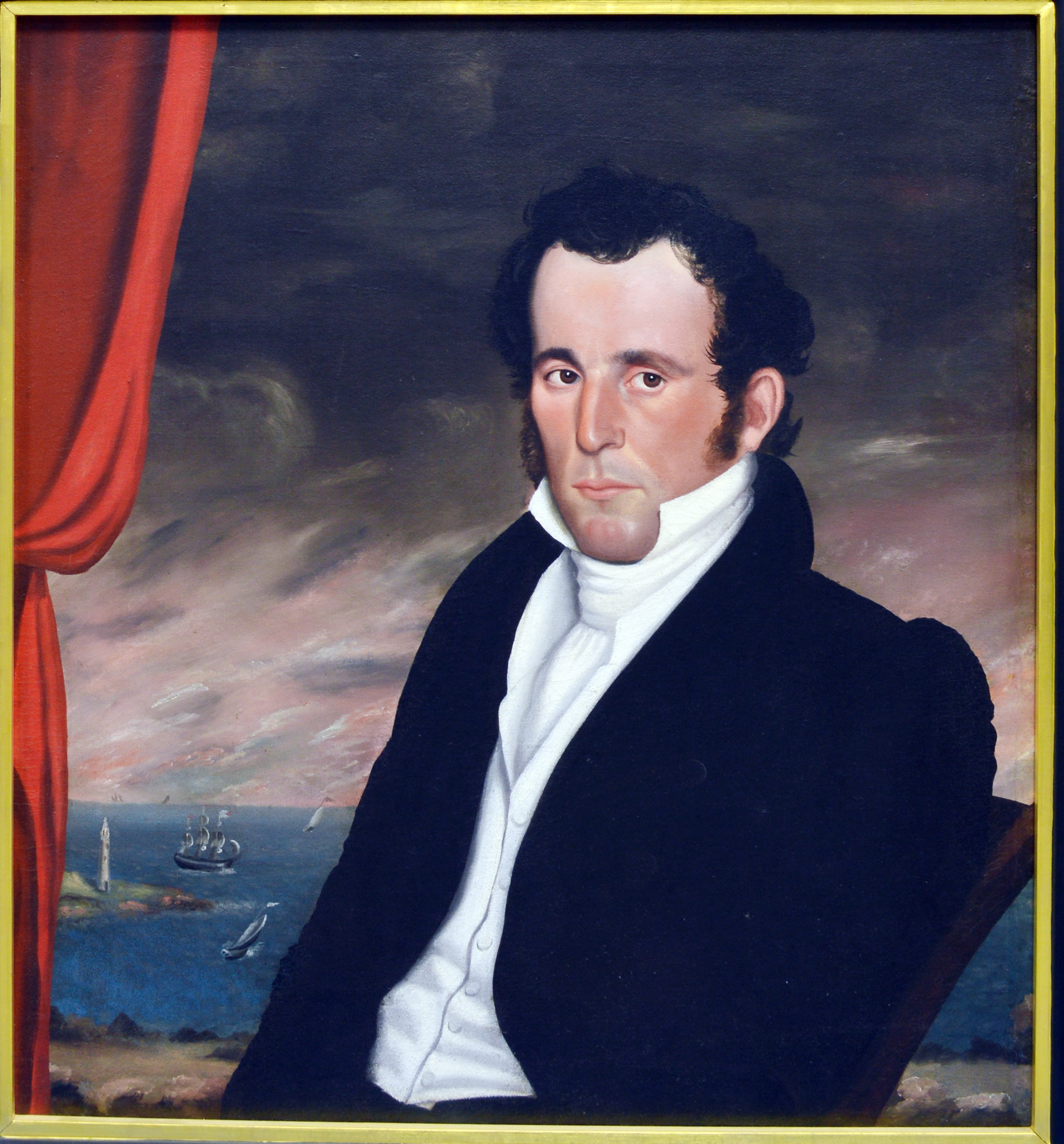The painting seen below depicts Captain James F. Smith of New London, one of five brothers who were whaling captains out of that port. All had successful careers and their combined return on all their voyages grossed over 1.2 million dollars. Quite an accomplishment for the mid-19th century.

To get ahead and succeed in such a business obviously took a bit of spunk and our man James seems to certainly have had a surfeit of it. The whaleships he commanded, beginning in 1824, were the COMMODORE PERRY, the PHOENIX, the BINGHAM, the COLUMBIA and the HIBERNIA. According to former Mystic Seaport Curator Edouard Stackpole, Smith had quite a reputation as a rough and tumble captain with one story having him “beating the tar” out of a rival British whaling master while ashore in some foreign port.
After leaving whaling, Smith sailed packets for some years between San Francisco and Hawaii. It was on a trip to Hawaii as a passenger that Smith achieved the dubious honor of becoming a character in not one, but two different stories written by Mark Twain. It seems that on the passage to Hawaii on board the ship AJAX in 1866 Twain met Smith (alias “Captain Cuttle” per Twain) who was accompanied by two New London whaling captains, Asa Fish (“Captain Fitch”) and W.H. Phillips (“Captain Phelps”). In a spate of writing that launched his career, Twain wrote a series of letters from Hawaii for the Sacramento Union in 1866. In them he writes about all three captains and their boisterous card games where they engaged in nautical repartee and drank copious amounts of whiskey (nineteen gallons according to Twain). Smith also appears as the “Old Admiral” in Twain’s Roughing It. The introduction of Smith in the book is as follows: “And then there was “the old Admiral” – a retired whaleman. He was a roaring, terrific combination of wind and lightning and thunder, and earnest, whole-hearted profanity. But nevertheless he was tender-hearted as a girl. He was a raving, deafening, devastating typhoon, laying waste the cowering seas, but with an unvexed refuge in the center where all comers were safe at rest.”
It is difficult to imagine that the serene person in the painting with one of his whaleships in the background could be a “roaring, terrific combination of wind and lightning and thunder,” but then again, looks can be deceiving.